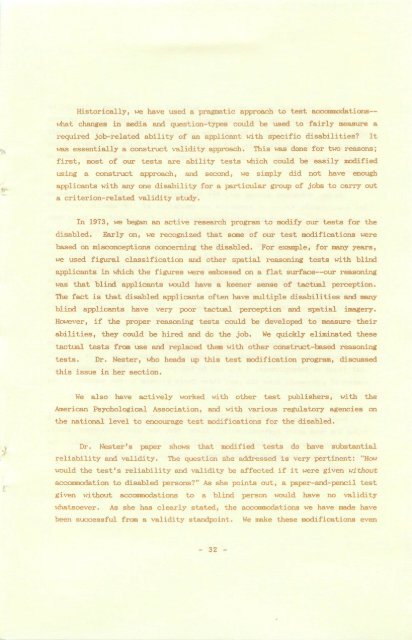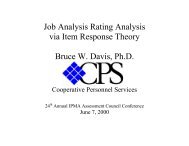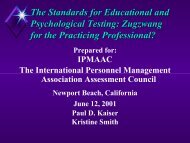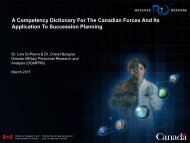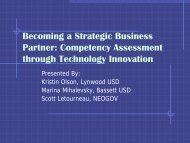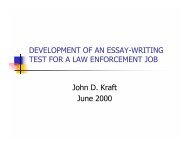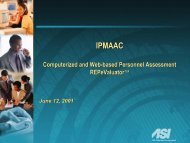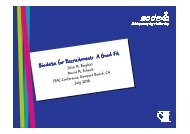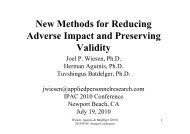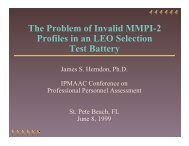Employment Testing of Persons with Diasabling Conditions - IPAC
Employment Testing of Persons with Diasabling Conditions - IPAC
Employment Testing of Persons with Diasabling Conditions - IPAC
Create successful ePaper yourself
Turn your PDF publications into a flip-book with our unique Google optimized e-Paper software.
Historically, we have used a pragmatic approach to test accommodations—<br />
what changes in media and question-types could be used to fairly measure a<br />
required job-related ability <strong>of</strong> an applicant <strong>with</strong> specific disabilities? It<br />
was essentially a construct validity approach. Tliis was done for two reasons;<br />
first, most <strong>of</strong> our tests are ability tests which could be easily modified<br />
using a construct approach, and second, we simply did not have enough<br />
applicants <strong>with</strong> any one disability for a particular group <strong>of</strong> jobs to carry out<br />
a criterion-related validity study.<br />
In 1973, we began an active research program to modify our tests for the<br />
disabled. Early on, we recognized that some <strong>of</strong> our test modifications were<br />
based on misconceptions concerning the disabled. For example, for many years,<br />
we used figural classification and other spatial reasoning testa <strong>with</strong> blind<br />
applicants in which the figures were embossed on a flat surface—our reasoning<br />
was that blind applicants would have a keener sense <strong>of</strong> tactual perception.<br />
The fact is that disabled applicants <strong>of</strong>ten have multiple disabilities and many<br />
blind applicants have very poor tactual perception and spatial imagery.<br />
However, if the proper reasoning tests could be developed to measure their<br />
abilities, they could be hired and do the job. We quickly eliminated these<br />
tactual tests from use and replaced them <strong>with</strong> other construct-based reasoning<br />
tests. Dr. Nester, who heads up this test modification program, discussed<br />
this issue in her section.<br />
We also have actively worked <strong>with</strong> other test publishers, <strong>with</strong> the<br />
American Psychological Association, and <strong>with</strong> various regulatory agencies on<br />
the national level to encourage test modifications for the disabled.<br />
Dr. Nester's paper shows that modified tests do have substantial<br />
reliability and validity. Tlie question she addressed is very pertinent: "How<br />
would the test's reliability and validity be affected if it were given <strong>with</strong>out<br />
accommodation to disabled persons?" As she points out, a paper-and-pencil test<br />
given <strong>with</strong>out accommodations to a blind person would have no validity<br />
whatsoever. As she has clearly stated, the accommodations we have made have<br />
been successful from a validity standpoint. We make these modifications even<br />
- 32 -


